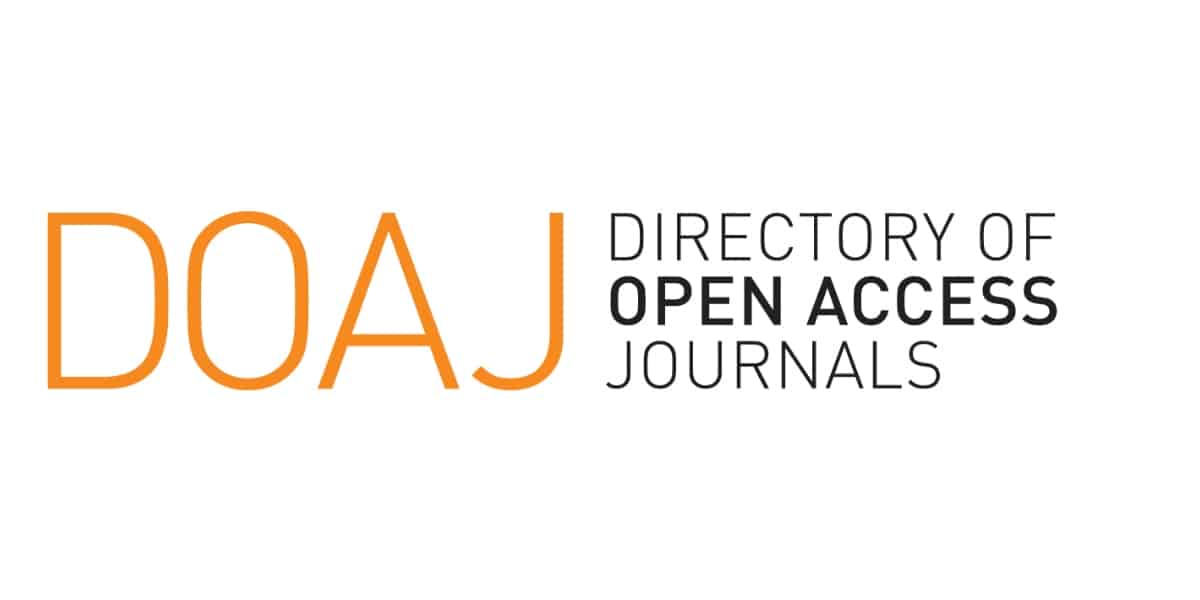Pengaruh Jarak Antar Plat Pada Elektrokoagulasi Terhadap Pengolahan Limbah Cair Industri Kecap
Keywords:
elektrokoagulasi, industri kecap, jarak antar plat elektroda, BOD, COD, TSSAbstract
The production of sweet soy sauce in Indonesia was particularly high in 2021, resulting in wastewater with elevated levels of COD, BOD and TSS. Therefore, wastewater from the soy sauce industry needs to be treated before being discharged into water bodies. In this study, the electrocoagulation method was used to reduce the levels of BOD, COD and TSS. Electrocoagulation is a process in which the anode releases active coagulants in the form of metal ions into the solution and electrolysis reactions occur, releasing hydrogen gas at the cathode. The aim of this research was to determine the effectiveness of electrocoagulation in reducing pollutants such as BOD, COD and TSS in industrial effluents. The study involved varying the distance between the electrode plates and the contact time. The treated wastewater was from a soy sauce industry in Surabaya. The results showed that increasing the electrode distance to 1cm, 2cm, 3cm and 4cm with a contact time up to 180 minutes significantly improved the efficiency of BOD, COD and TSS reduction. The best removal was achieved at 4 cm electrode distance and 180 minutes contact time, with reduction rates of 72.0% for BOD, 83.3% for COD and 90.6% for TSS.
References
[1] Istiqomah, I., Hamzani, S., & Syarifudin, A. (2018). Pengaruh Penambahan Serbuk Biji Asam Jawa (Tamarindus indicalin) Sebagai Koagulan Untuk Menurunkan Kadar COD (Chemical Oxygen Demand) Dan TSS (Total Suspended Solid) Pada Limbah Cair Industri Kecap. Jurnal Kesehatan Lingkungan: Jurnal dan Aplikasi Teknik Kesehatan Lingkungan, 15(1), 579-584.
[2] Indriyati, I., & Susanto, J. P. (2009). Pengolahan Limbah Cair Pabrik Kecap Secara Koagulasi Dan Flokulasi. Jurnal Teknologi Lingkungan BPPT, 10(3), 265-270.
[3] Istiqomah, I., Hamzani, S., & Syarifudin, A. (2018). Pengaruh Penambahan Serbuk Biji Asam Jawa (Tamarindus indicalin) Sebagai Koagulan Untuk Menurunkan Kadar COD (Chemical Oxygen Demand) Dan TSS (Total Suspended Solid) Pada Limbah Cair Industri Kecap. Jurnal Kesehatan Lingkungan: Jurnal dan Aplikasi Teknik Kesehatan Lingkungan, 15(1), 579-584.
[4] Hernaningsih, T. (2016). Tinjauan Teknologi Pengolahan Air Limbah Industri Dengan Proses Elektrokoagulasi. Jurnal BPPT, 31-46.
[5] Jati, B. N., & Aviandharie, S. A. (2015). Kombinasi teknologi elektrokoagulasi dan fotokatalisis dalam mereduksi limbah berbahaya dan beracun Cr (VI). Jurnal Kimia dan Kemasan, 37(2), 133-140.
[6] Marlina, M. (2023). Penurunan Kadar Logam Seng (Zn) Pada Limbah Cair Industri Batik Dengan Metode Elektrokoagulasi Menggunakan Elektroda Aluminium (Doctoral dissertation, Universitas Islam Indonesia).
[7] Afandi, A. M., Rijal, I., & Aziz, T. (2017). Pengaruh waktu dan tegangan listrik terhadap limbah cair rumah tangga dengan metode elektrolisis. Jurnal Teknik Kimia, 23(2), 114-119.
[8] Hakizimana, J. N., Gourich, B., Chafi, M., Stiriba, Y., Vial, C., Drogui, P., & Naja, J. (2017). Electrocoagulation process in water treatment: A review of electrocoagulation modeling approaches. Desalination, 404, 1-21.
[9] Budiany, R., Yayok, S. P., & Mohamad, M. (2014). Proses elektrokoagulasi pengolahan limbah laundry. Envirotek: Jurnal Ilmiah Teknik Lingkungan, 6(1), 15-22.
[10] Yasri, N. G., Ingelsson, M., Nightingale, M., Jaggi, A., Dejak, M., Kryst, K., ... & Roberts, E. P. (2022). Investigation of electrode passivation during electrocoagulation treatment with aluminum electrodes for high silica content produced water. Water Science and Technology, 85(3), 925-942.
[11] Hermida, L., Kustiani, I., & Suharno, S. (2020). Evaluasi Kinerja Sistem Elektrokoagulasi Batch Recycle Dengan Susunan Eleltroda Monopolar Dalam Mengolah Limbah Cair Tapioka. Jurnal Profesi Insinyur Universitas Lampung, 1(1), 20-28.
[12] Rengkugegana, M. E. (2022). Pengolahan Limbah Laundry Dengan Metode Elektrokoagulasi Secara Kontinyu (Doctoral dissertation, UPN Veteran Jawa Timur).
[13] Sugito, S., Al Kholif, M., Tyas, Y. A. N., & Sutrisno, J. (2022). Pengaruh Elektrokoagulasi pada Penurunan Kadar BOD, COD, dan Amonia untuk Mengolah Limbah Cair Industri Pembekuan Udang (Cold Storage). Jurnal Ilmu Alam dan Lingkungan, 13(1).
[14] Moreno, H. A., Cocke, D. L., Gomes, J. J. A., Morkovsky, P., Peterson, E., & Parga, J. R. (2006). Electrocoagulation: COD Removal Mechanism. American Institute of Chemical Engineers.
[15] Setianingrum, N. P., Prasetya, A., & Sarto, S. (2017). Pengurangan zat warna Remazol Red Rb menggunakan metode elektrokoagulasi secara batch. Jurnal Rekayasa Proses, 11(2), 78-85.
[16] Jiang, J. Q., & Graham, N. J. D. (1996). Enhanced coagulation using Al/Fe (III) coagulants: effect of coagulant chemistry on the removal of colour-causing NOM. Environmental technology, 17(9), 937-950.
[17] Khaer, A., & Rusli, R. (2019). Kombinasi Elektrokoagulai Dengan Media Clay Filter Dalam Menurunkan Kadar Fosfat (PO4) Limbah Laundry. Sulolipu: Media Komunikasi Sivitas Akademika dan Masyarakat, 18(2), 211-215.
[18] Vatra, R. P. R. (2023). Pengolahan Air Lindi TPA Batu Layang Menggunakan Metode Elektrokoagulasi dan Filtrasi. G-Tech: Jurnal Teknologi Terapan, 7(2), 737-744.
[19] Damajanti, N., & Ubaidillah, S. (2023). Penyisihan COD dan TSS pada Limbah Cair Industri Tahu dengan Kombinasi Metode Elektrokoagulasi dan Filtrasi Menggunakan Media Biji Asam Jawa (Tamarindus indica L). Proceedings Series on Physical & Formal Sciences, 6, 62-66.
[20] Igwegbe, C. A., Onukwuli, O. D., Ighalo, J. O., Umembamalu, C. J., & Adeniyi, A. G. (2021). Comparative analysis on the electrochemical reduction of colour, COD and turbidity from municipal solid waste leachate using aluminium, iron and hybrid electrodes. Sustainable Water Resources Management, 7(3), 39.
Downloads
Published
Issue
Section
License
Copyright (c) 2024 Dea Kirana Nurlaili, Aussie Amalia (Author)

This work is licensed under a Creative Commons Attribution 4.0 International License.
















